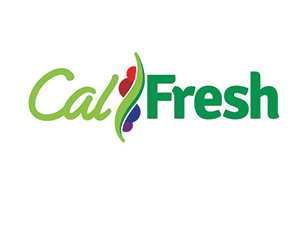
Californians To Lose A Monthly Average $163 In Temporary SNAP/CalFresh Pandemic Benefits March 1st
CalFresh had been receiving $425 million per month from the Department of Agriculture for emergency allotments
By Evan Symon, March 1, 2023 2:30 am
Emergency Supplemental Nutrition Assistance Program (SNAP) programs passed during the pandemic are set to expire on Wednesday, with California expected to lose the extra monthly $425 million granted by the federal government.
The additional funds were originally added in March 2020 when former President Donald Trump passed the Families First Coronavirus Response Act. The added SNAP funds, also known as SNAP Emergency Allotments (EA), were to go to any state that had the federal government’s public health emergency in effect, as well as a state emergency or disaster declaration also in effect. California qualified immediately, with the United States Department of Agriculture (USDA) assigning funds for California’s state SNAP program, CalFresh. Most states soon followed, taking advantage of a program designed to address temporary food needs during the COVID-19 pandemic.
While millions initially qualified, in 2022 only around 2.6 million Californians were still receiving the additional emergency SNAP funds. The average extra amount per household stood at $163 per month, and around $84 per person. In total the USDA was paying California around $25 million per month. Compared to other states, California had the most SNAP eligible households in 2022 with the next closest, New York, coming in a distant second with only 1.6 million eligible recipients. However, California was not giving the most extra per household as Guam, Hawaii, Minnesota, New Hampshire, and Wisconsin all giving households $200 or more per month on average.
With COVID-19 restrictions and emergency orders quickly being removed around the country, the USDA and the Biden administration decided to not extend the emergency benefits last year. While many families are expected to feel the brunt of the cuts in the coming months, experts noted that families should have had enough time to find work and reorganize finances to not need the additional assistance.
“This was a temporary thing,” explained Los Angeles-area food bank organizer and volunteer food budget advisor Stanley Darrow ton the Globe on Tuesday. “People just got so used to the extra hundred or two hundred a month they were getting to help stretch funds. We always see this whenever there are cuts to food stamps. People get so used to getting this money coming in, then they totally blank on what to do when it’s lowered. Or when they get disqualified for WIC. Food banks become a necessity.”
“This one is a bit different because this was added due to an emergency. But like with regular benefits, people got used to it coming in, so now they have to go back to the regular amount. Whenever this happens we see a new wave of people come in, so March and April we’ll see a jump. We have been for awhile with a rough economy, so we’ll have even more people who need help.”
“I wish the cuts were not so sudden, but what can you do? A lot of Californians will be asking to see if they can get anymore too now. We just don’t know what the effects will be yet.”
Final EA funds are expected to be rolled out through about mid-March in California. CalFresh currently has no plans to make up for any of the lost emergency funds.
- Bill to Require Law Enforcement Disclosure if AI Was Used To Help Write Reports - August 7, 2025
- Gov. Newsom Files FOIA Request To ‘Expose True Cost’ Of L.A. Federal Troop Deployment for Anti-ICE Riots - August 6, 2025
- California Redistricting: How Newsom’s Plan Will Demolish Hard Fought GOP Gains - August 6, 2025








So the guy who wants to be President got the other 49 states to send $425 million a month to stimulate our economy by not declaring an end to the emergency. It’s going to hurt now. People who haven’t really felt the results of food inflation are going to get hit with the last two years of price increases all at once.
Finally, maybe they will go out & get a job